
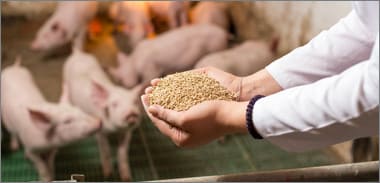
A nutritionally balanced diet is crucial for the welfare of animals. it is also important for the quality of livestock products such as milk, meat, and eggs, which contribute to human nutrition. Feed is made up of many ingredients, which are fats, oils, carbohydrates, protein, vitamins and minerals. Typically, cereals such as wheat or barley provide energy while soybeans, lupins, and peas provide protein. In order to develop a nutritionally balanced diet, it is important to know in which amount these elements should be included both in the diet and in every single component of the feed, for instance, in peas.
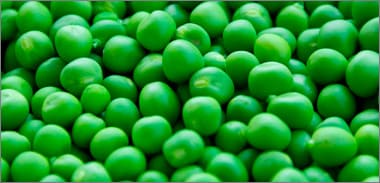
Peas are one of the four most important legume crops next to soybean, groundnut, and beans. Field pea contributes significant amounts of protein, carbohydrates, and amino acids to all animal species and is increasingly included as an ingredient in beef, dairy, swine, and poultry rations due to their nutrient density. Feed pea protein averages 23% and is highly digestible with an excellent amino acid balance. The amino acids in peas are indeed highly digestible by swine and poultry, having a similar or higher digestibility than in grain. Furthermore, peas have especially high levels of lysine (more than soybean meal) which is good for meat production.
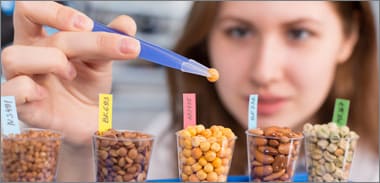
Several varieties of peas are grown and each has unique characteristics. For instance, the crude protein content of peas may vary due to the influence of variety and environment. Because of this reason, field peas should be tested for protein, fat, and fiber for inclusion in balanced livestock rations.
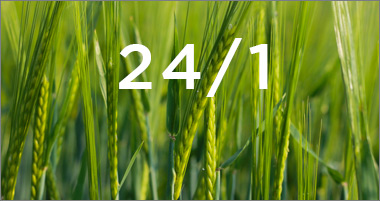
To determine the protein content, it is possible to analyze the sample according to the Dumas method and the Kjeldahl method. Both are primary methods working in accordance with international standards such as AOAC, AACC, ASBC, ISO, IFFO, OIV. As far as the fat content is concerned, it is possible to calculate the quantity of crude and total fat in peas. Crude fat is determined with a hot solvent extraction process according to the Randall method, while total fat is determined by solvent extraction following preliminary hydrolysis.
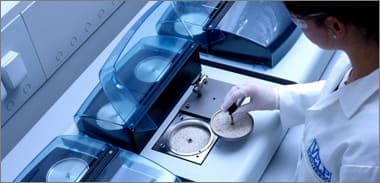
A direct extraction with solvents is not efficient because part of the lipids is chemically bonded with other components. Thus, the determination of the total fat content of the pea samples requires preliminary treatment using hydrochloric acid 4 N, followed by filtration and washing, in order to free the fat molecules completely. Then the hydrolyzed sample is ready for extraction.
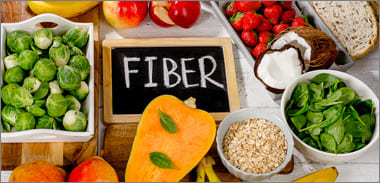
To determine the fiber content, the different parts of the fiber contained in the sample of feed are evaluated: Crude Fiber, Neutral Detergent Fiber, Acid Detergent Fiber, Acid Detergent Lignin.
VELP developed advanced analytical solutions and instruments to determine all these crucial parameters. Proficiency Testing Programs organized by BIPEA allow the comparison of several laboratories’ results, in order to evaluate their analytical performance on the same homogeneous sample. Samples are then analyzed and the obtained results are successfully compared with the given tolerance range.
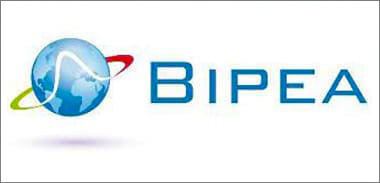
By taking part in such programs on a regular basis, the performance of VELP instruments is constantly evaluated. Both VELP Kjeldahl analytical instruments and VELP N/Protein Elemental Analyzers for protein determination are efficient and capable of analyzing peas samples with high repeatability. VELP N/Protein Elemental Analyzers with high productivity and non-stop performances, are ideal for high throughput, being fully automated and requiring just 3-4 minutes per analysis.
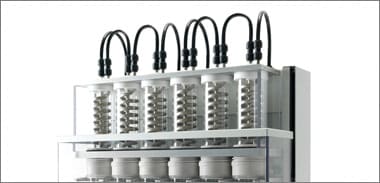
VELP Solvent Extractors and Hydrolysis Unit are ideal for crude fat and total fat determination in peas in accordance with "ISO 11085:2015 Cereals, cereals-based products, and animal feeding stuffs". Determination of crude fat and total fat content by the Randall extraction method, which is up to 5 times faster than Soxhlet.
The use of an extraction apparatus purposely devised for crude and detergent fiber determination as VELP Fiber Analyzer makes the standardization of analytical conditions very easy and ensures optimized operativity in the lab.

Protein Dumas reference:
AOAC 992.23 Crude Protein in Cereal Grains and Oilseeds, ISO 16634-1:2008 Oilseeds and animal feeding stuffs
Protein Kjeldahl reference:
AOAC 2001.11 Protein (Crude) in Animal Feed, Forage (Plant Tissue), Grain, and Oilseeds;
REG CE 152/2009; EN ISO 5983-2:2009 Animal feeding stuffs
Fat reference:
ISO 11085:2015 Cereals, cereals-based products and animal feeding stuffs -- Determination of crude fat and total fat content by the Randall extraction method
Fiber Reference:
ISO 6865:2000 Animal feeding stuffs - Determination of crude fiber content
AOAC 978.10 Fiber (Crude) in Animal Feed and Pet Food